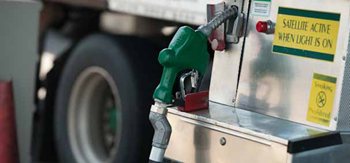Fuel is the number one cost for drivers and it’s crucial for your financial success to recoup some of this expense. The way this expense is covered is through a fuel surcharge. A fuel surcharge is a reimbursement for the fuel expenses you incur during the delivery. It is usually added to the freight charges on either a per-mile or percentage basis. Most fuel surcharges are based on an average mile per gallon and the national average price of diesel. You are most likely receiving some form of fuel surcharge, but it’s important to understand how it is calculated and whether it is actually covering your fuel expenses.
 So, how do you know what your fuel surcharge is worth? Well, as long as you know your truck’s fuel economy, you can easily calculate whether your surcharge is adequately compensating for fuel. If you get better fuel mileage than the average driver, you could actually make money off the fuel surcharge. Carriers usually structure their surcharge scale by assuming certain fuel efficiency, such as 6 miles per gallon. The surcharge is calculated on either a cents-per-mile basis or as a percentage of what the customer pays the carrier for the load.
So, how do you know what your fuel surcharge is worth? Well, as long as you know your truck’s fuel economy, you can easily calculate whether your surcharge is adequately compensating for fuel. If you get better fuel mileage than the average driver, you could actually make money off the fuel surcharge. Carriers usually structure their surcharge scale by assuming certain fuel efficiency, such as 6 miles per gallon. The surcharge is calculated on either a cents-per-mile basis or as a percentage of what the customer pays the carrier for the load.
- Cents-per-mile: Suppose a certain carrier’s surcharge is designed to cover any price increase above $1.25 per gallon and fuel is at $4.00 per gallon. Ideally, you’ll receive a surcharge covering the $2.75 difference. If the average driver gets 6 miles per gallon, divide the $2.75 by 6, then the fuel surcharge should be 45.8 cents per mile to break even. Now, if you get 7 miles per gallon, you will only need 39.2 cents per mile to break even. So you’re getting 6.6 cents more per mile than needed to break even. So, for every 10,000 miles, that’s $660.00 extra to add to your revenue.
- Percentage: The surcharge can also be figured as a percentage of the price the customer pays the carrier. This is also simple to calculate when you know your miles per gallon. The average is 6 miles per gallon and, as we determined, you would need a surcharge of 45.8 cents per mile to break even. Assume you’re offered a 1000 mile haul for $1100 in gross revenue. Multiply the necessary cents per mile by the total number of miles on your haul. Now, divide $458 by $1,100. This will show 41.6% of gross revenue will be used to cover extra fuel costs. Now, based on this and other costs, you can determine whether you’ll be making money.
Drivers can make a good profit from their fuel surcharge by using good fuel economy practices. To have good fuel economy, you need to overcome rolling resistance, air resistance, and gravity. By limiting idle time, making slower starts and stops, having proper tire inflation, and reducing your speed, you will increase your miles per gallon. This will also limit the number of fuel stops you need to make, thus increasing your productivity.
With fuel prices continually rising, getting a fuel surcharge is increasingly important. If your carrier’s surcharge is inadequate, compare those offered by other carriers. If a customer will not pay a surcharge, don’t accept the load unless you will still be making a profit. If you’re not recouping the extra fuel expenses, you’re going to lose money; it’s as simple as that. Know how fuel surcharge is calculated and whether it compensates for your actual expense. By understanding this and using good fuel economy practices to your advantage, you could save yourself several thousand dollars a year.